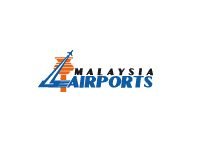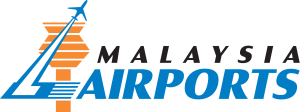Press Statement by Malaysia Airports Holdings Berhad: THE LOW COST CARRIER TERMINAL

In recent weeks, Malaysia Airports Holdings Berhad (MAHB) has noted numerous comments made with regard to the current Low Cost Carrier Terminal (LCCT) at KLIA. It has always been MAHB's view that issues are best resolved through proper consultation rather than through the media. However, MAHB feels that a need has arisen whereby we are duty-bound to clarify the statements that have continually been made in the media. MAHB wishes to categorically state that we fully support the development of low fare travel in Malaysia and recognise the role that AirAsia has played in this development.
Kuala Lumpur, 5 January 2009
In recent weeks, Malaysia Airports Holdings Berhad (MAHB) has noted numerous comments made with regard to the current Low Cost Carrier Terminal (LCCT) at KLIA. It has always been MAHB's view that issues are best resolved through proper consultation rather than through the media. However, MAHB feels that a need has arisen whereby we are duty-bound to clarify the statements that have continually been made in the media.
MAHB wishes to categorically state that we fully support the development of low fare travel in Malaysia and recognise the role that AirAsia has played in this development.
THE LOW COST CARRIER TERMINAL
1. When AirAsia moved to KLIA in mid 2002, its operations expanded and therefore needed more space at the Main Terminal for check-in counters as well as additional departure gates. Over and above this, AirAsia's business model did not require the use of aerobridges, and the available baggage and check-in systems. Also, AirAsia needed to have power-in power-out apron operations. As long as AirAsia remained at KLIA's Main Terminal its growth would have been hindered.
2. To enable AirAsia to grow and achieve greater operational efficiency, the best solution was to provide them with a separate facility to meet their operational requirements. Therefore, it was decided that a separate temporary facility be built for low cost airlines. Several sites were identified for this purpose. The present site was chosen because an apron was already in place and the land was already prepared for development, thus allowing for the LCCT to be built quickly and accommodate AirAsia's growth. It was completed within nine months with a capacity for 10 million passengers and 30 aircraft parking bays. It also had a provision for expansion of up to 15 million passengers.
The design of the terminal was based on AirAsia's requirements to cater for their business model which included no aerobridges, no bussing facilities, dedicated check-in counters, and dedicated baggage system. Although MAHB had a different view as this would be inefficient use of the facilities, we accommodated these requests.
3. In discussions held for the design of the LCCT in 2003, AirAsia had projected that it would hit 10 million passengers by the year 2012. Three important events since then, however have altered this projection. Firstly, AirAsia managed to secure more international rights than originally expected. Secondly, the routes rationalisation exercise provided AirAsia more domestic routes. And thirdly, AirAsia expanded its business model to include wide-body aircrafts for long-haul operations, which was not in their original plan when the terminal was first designed. Based on AirAsia's business model, the terminal and apron were designed for narrow-bodied aircraft fleet only. Nevertheless, MAHB recognised the variation to their business model and accommodated to these changes.
4. In fact, as the use of wide bodied aircrafts at this terminal would cause congestion, MAHB had suggested that AirAsia should use the Main Terminal for its wide bodied, long-haul operations. However, as this was not suitable for AirAsia as they wanted to have a quick transfer for their passengers, MAHB acceded to AirAsia's request to also operate wide-body aircrafts from the LCCT.
5. To further enhance passenger comfort, MAHB also incurred additional costs in constructing covered walkways for passengers, a food garden and expanded its vehicle parking bays.
6. In order to accommodate AirAsia's accelerated growth of over 10 million passengers this year, expansions to the temporary terminal for 15 million passengers have been brought forward three years ahead of schedule for completion in early 2009 at a cost of over RM170 million. This would double the terminal's international passenger capacity.
7. With the recent opening of the newly expanded international arrival hall and the soon to be completed international departure hall and public concourse, it is expected that the terminal congestion will ease. To further alleviate the congestion, MAHB has appealed to AirAsia to open up more check in counters per flight as there are many available at the LCCT. MAHB has also urged AirAsia to provide additional ground handling staff for arrival baggage as there are now six carousels at the arrival hall instead of two previously.
CHARGES AND INCENTIVES
1. MAHB wishes to clarify that the level of aeronautical charges are approved by the Government authorities. Charges paid by airlines at Malaysia's airports are already low and discounted against those charged by neighbouring competing airports. This is acknowledged by the aviation industry. This provides a low cost operating opportunity for home-based airlines as well as foreign airlines operating to Malaysia. Any increases or decreases in these charges are within the purview of the Government authorities and MAHB fully respects this. It needs to be emphasised that the landing and parking charges in Malaysia have not been increased for the last 27 years. Therefore, the issue of high aeronautical charges does not arise.
2. Some airports do provide discounts on those charges as incentives to airlines. MAHB already has an incentive programme for foreign airlines in place to encourage them to operate to Malaysia. This programme is applicable even to AirAsia Thailand and AirAsia Indonesia as they are foreign registered entities.
3. To facilitate AirAsia's move from Subang Airport to KLIA in 2002, AirAsia was given a waiver of all aeronautical charges (excluding Passenger Service Charge (PSC)) paid by AirAsia for their flights over and above what the airline was paying at Subang Airport. This waiver was for a period of five years (2002-2007) and was applicable not only at KLIA but also at all other airports in Malaysia that AirAsia may operate to. This waiver was for both domestic and international flights, which includes landing, parking, aerobridge and check-in counter charges. AirAsia also enjoyed special rental rates for office space at all airports.
4. AirAsia had requested for an extension of this programme. Although MAHB was unable to agree to this request, MAHB did indicate to AirAsia that a new incentive scheme was being formulated which will provide waivers for landing charges and incentives for growth. This scheme would also be extended to all other airlines. This scheme however, was dependent upon the outcome of the financial restructuring to be approved by the Government. With the approval announcement recently made on 23 December 2008, this scheme will be announced soon.
5. AirAsia had also requested for reduction in aeronautical charges at LCCT compared to the Main Terminal at KLIA. As aeronautical charges at both LCCT and the Main Terminal are regulated by the government authorities, this is a matter for the government authorities to decide. The government had already reduced the PSC at LCCT, in KLIA and in Kota Kinabalu by approximately half of that of the Main Terminal at these two airports.
NATIONAL AIRPORT MASTER PLAN (NAMP) STUDY
1. Malaysia Airports, with the support of Ministry of Transport and Ministry of Finance, initiated the development of the National Airport Master Plan study in July 2007. This study is to set the direction for the future development of airports and aviation infrastructure in the country. The formulation of this master plan involved all relevant government agencies, MAHB, Malaysia Airlines, AirAsia as well as representatives of foreign airlines. This master plan can be used as a basis for the orderly construction and development of all airports including permanent LCCTs in Malaysia.
2. The study, which has just recently been completed, took into account the development of low fare travel in Malaysia. The study, after considering several locations, has identified a location of the permanent LCCT at KLIA. The new LCCT location was selected as it would provide excellent connectivity for both landside and airside transfers for passengers as well as baggage.
3. The existing ERL would be extended for an additional 1.5 kilometres to connect the new LCCT to the existing Main Terminal. The LCCT would be built via a multi-modular design, with each module being able to handle 15 million passengers. The first phase of the permanent LCCT's development would encompass two modules and a parking apron capable of accommodating at least 60 aircrafts of various sizes and configurations. The design of the airport terminal will focus on passenger comfort as well as operational efficiency for the LCC.
4. The new terminal would be seamlessly integrated into KLIA's current infrastructure via ERL immediately and via AeroTrain when the second satellite building is constructed. Pending Government's approval, the first phase of this project could be ready by the end of 2011 and could be built at reasonable cost due to the availability of existing infrastructure.
5. When the need arises, in line with KLIA's Masterplan, a third runway can be built parallel to the second runway as aircraft movements and passenger traffic increases. This would offer efficient and quick turnaround for LCCs as there would then be two runways that would be of equal distance from the new permanent LCCT and its Parking apron.
6. Thanks to the Government's approved restructuring plan, MAHB is now in a position to partake the project with its own funds. Self-funding from its own cash reserves is not new to MAHB. Over the last 15 years, MAHB has spent over RM1 billion from its own cash reserves for the building and upgrading of airports such as KLIA for A380 readiness, development of apron and a cargo complex in Penang, and the development of new terminal buildings in Alor Setar, Langkawi, and Kota Bharu just to name a few.
7. As we have successfully done in the past, MAHB continues to cross-subsidise several loss-making domestic airports and rural services airports.
8. This proposal for the new LCCT to be completed in three years' time will provide excellent connectivity with construction at reasonable cost and can be self-funded by MAHB. The synergy between the legacy carriers and LCCs under one roof would pave the concept of a "new generation" airport hub in the region.


